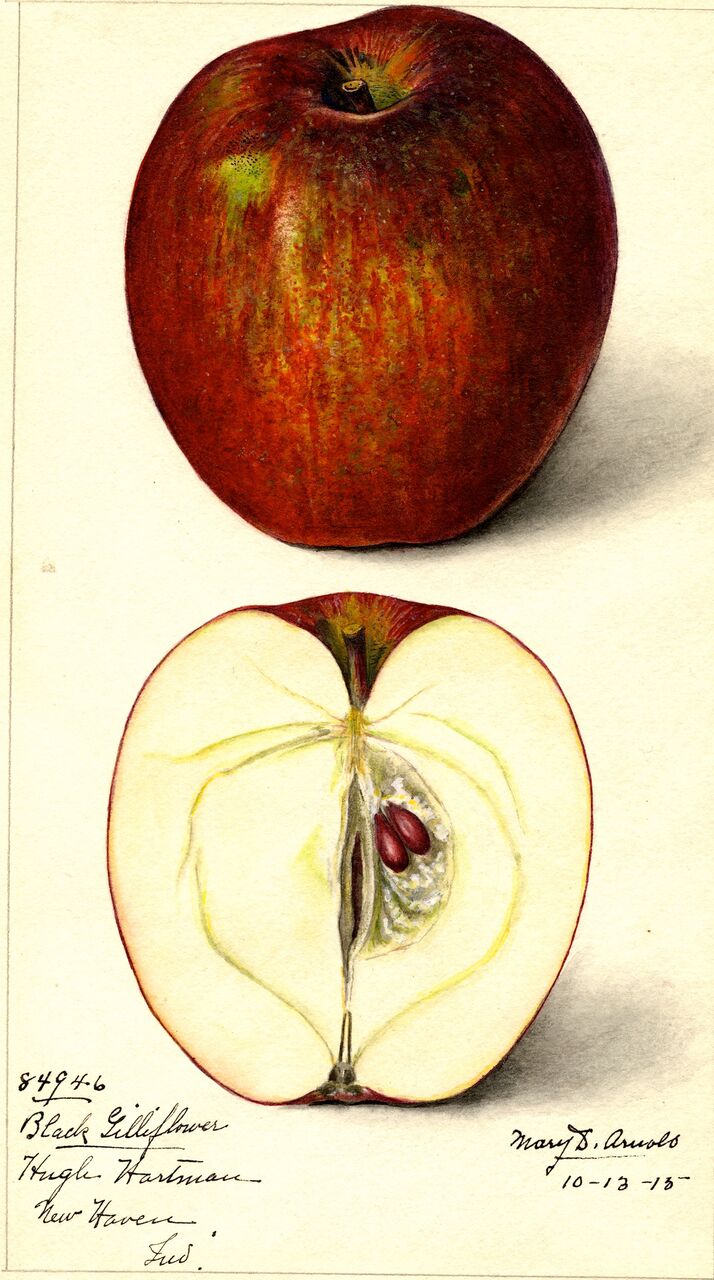
BLACK GILLIFLOWER
One of the seedling apples that came into being in colonial New England, the Black Gilliflower was a ribbed conical large sized dark red apple that spread well into the South before the American Revolution. While its flesh is rather coarse textured, greenish white, and rather forward in flavor, the Black Gilliflower proved to be an excellent drying apple. An aromatic fruit, the fragrance remained in the dried slices. In the South an apple called the Crow’s Egg may have been identical to this. Its distinctive red-black color and oblong shape gave it eye appeal on the produce stand, but it never vied to be a market leader. Its October ripening date made it available at the time when many other varieties were ripe.
In the history of American apples, its most important contribution was its probable parentage of the Red Delicious apple. It remains widely available from dealers in antique apples, because of its great longevity as an American variety. It was among the 100 old apples selected by Old Sturbridge Village in the early 1960s to make up one of the first historic heirloom orchards in America. The Cornish Gilliflower was the parent of the Black.
“Rather large, oblong conical, very dark reddish purple in the sun; often light red, with faint approach to yellow, on the deeply shaded side; stem threefourths of an inch long; segments of the calyx closely pressed together; basin shallow, narrow, and furrowed; flesh yellowish white, with a shade of green; flavor rich, mild, sub-acid, fine; flesh tender, large grained, dry when fully ripe, which is its greatest objection. Tree a free grower, great bearer, fruit always perfectly fair, and, as a long keeper, scarcely inferior to the Roxbury Russet.” The Magazine of Horticulture, Botany, and All Useful Arts 16 (1855), 201.]
Image: U.S. Department of Agriculture Pomological Watercolor Collection. Rare and Special Collections, National Agricultural Library, Beltsville, MD 20705, Mary Arnold, 1915.
David S Shields